Look, Europe’s got some seriously creepy places. I’m talking about spots where stuff actually happened, not just made-up ghost stories for tourists. These places have real history, real deaths, and honestly? Real weird things that nobody can explain.
- 1. Edinburgh Castle, Scotland
- What Actually Happened Here
- The Headless Drummer
- 2. Edinburgh Vaults, Scotland
- Life in the Vaults
- What Happens Down There Now
- What They Found
- 3. Tower of London, England
- Anne Boleyn Won’t Leave
- Recent Incidents
- 4. Château de Brissac, France
- The Green Lady
- What People Report
- 5. Poveglia Island, Italy
- Plague Island
- The Mad Doctor
- Why You Can’t Visit
- 6. Predjama Castle, Slovenia
- The Robber Baron
- What Happens Now
- 7. Château de Fougeret, France
- The Seven Skulls
- What Happens When You Move Them
- Science Can’t Explain It
- 8. Borgvattnet Vicarage, Sweden
- 140 Years of Documentation
- The Three Gray Ladies
- What Investigators Found
- 9. Houska Castle, Czech Republic
- The Bottomless Pit
- Why This Castle is Weird
- What’s Down There Now
- 10. Ancient Ram Inn, England
- 11. Bran Castle, Romania
- What People See Now
- 12. Corvin Castle, Romania
- The 3 Turkish Prisoners
- What Security Cameras Catch
- What They’ve Dug Up
- 13. Château de Puymartin, France
- 14. Palace of Holyroodhouse, Scotland
- The Rizzio Murder
- What Staff Document
- The Gray Lady
- 15. Leap Castle, Ireland
- The Bloody Chapel
- The Oubliette Discovery
- Current Owner’s Experience
- What Makes These Places Different
After digging through historical records, police reports, and way too many witness statements, here are the 15 haunted places in Europe that’ll give you goosebumps for all the right reasons.
1. Edinburgh Castle, Scotland

This castle gets attacked more than any other place in Britain — 23 times. That’s a lot of people dying in one spot over 3,000 years.
What Actually Happened Here
The castle sits on an extinct volcano, which is cool, but it’s also been a prison, execution site, and battlefield forever. During the Seven Years’ War, they crammed French prisoners into the dungeons. Most died from disease and starvation.
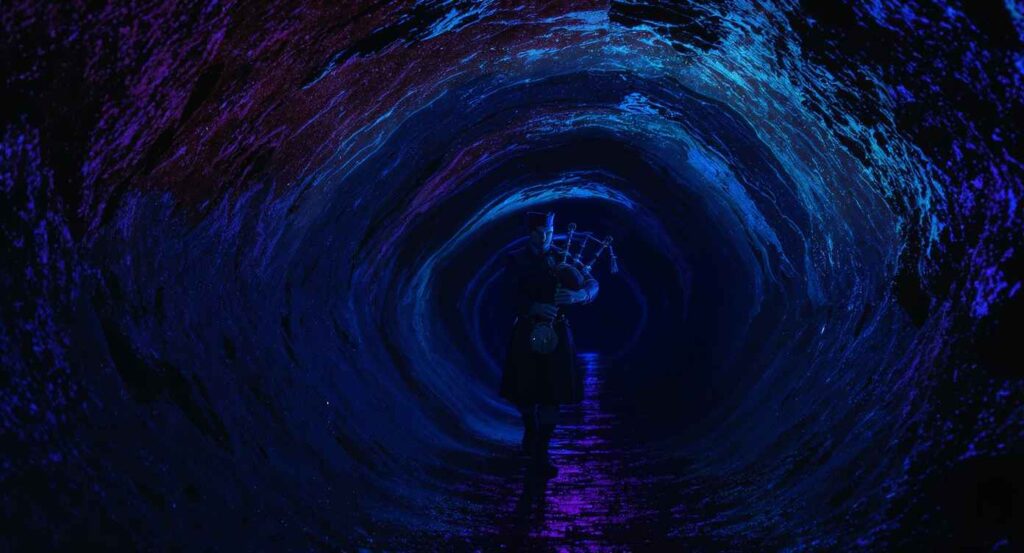
Here’s the weird part: centuries ago, they found tunnels under the castle. They sent a piper down to explore them. His music could be heard above ground as he walked through the tunnels. Then the music stopped. They never saw him again and sealed the tunnels.
People still hear pipe music at the castle, particularly near the Half Moon Battery.
The Headless Drummer
This one’s documented going back to 1650. A drummer boy appears on the battlements before attacks happen. He showed up before Cromwell attacked in 1650, then again before the 1745 uprising.
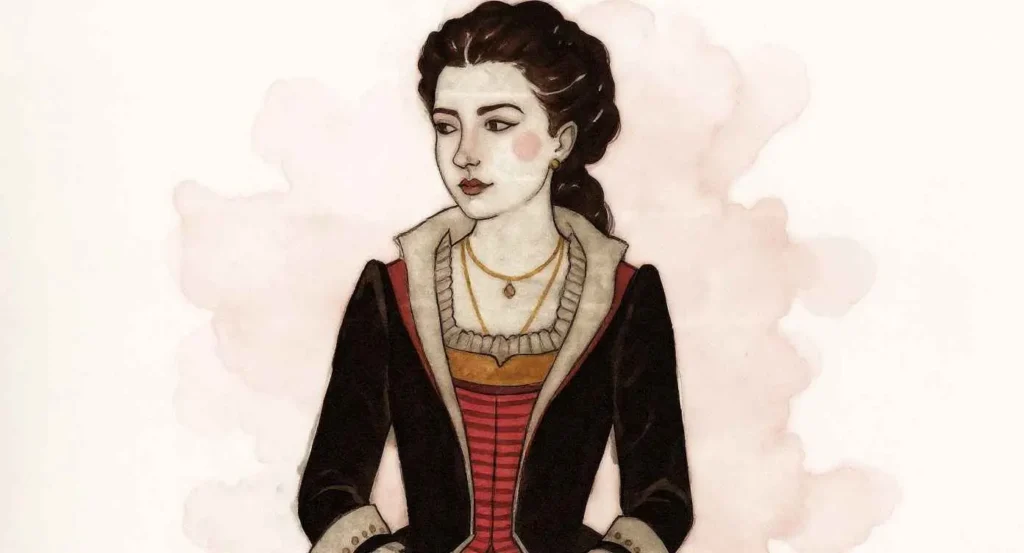
Guards have logged reports of:
- Temperature drops of 10-15 degrees in specific rooms
- A ghostly dog in the cemetery
- Lady Janet Douglas (burned as a witch in 1537) walking around
- Shadow figures in the dungeons
Location Details
2. Edinburgh Vaults, Scotland
These underground chambers tell a story most people don’t want to hear. Built in 1788 under the South Bridge, they started as legitimate businesses. By the 1820s, they became slums where the poorest people in Edinburgh lived.
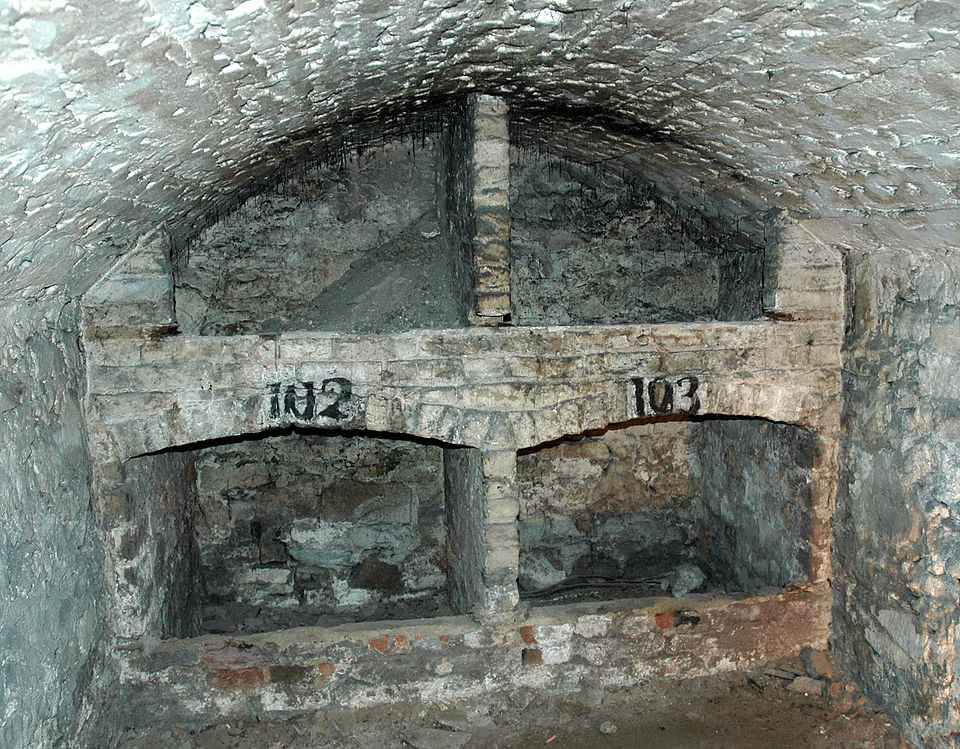
Life in the Vaults
Families lived in single rooms with no windows, no toilets, and no clean water. Child death rates hit 60%. Most adults died before 40. When conditions got bad enough, respectable businesses left. What remained were criminals, body snatchers, and desperate families.
The city abandoned the vaults in 1835 and forgot about them until the 1980s.
What Happens Down There Now
Modern investigations found some interesting stuff:
The Wine Vault: Electronic recordings pick up voices speaking 18th-century Scots. Visitors feel hands touching them. This happens a lot.
The Torture Chamber: They found human remains and torture devices here. The temperature stays cold year-round. Mediums claim there’s a spirit named Jack, a cobbler who died in the 1840s.
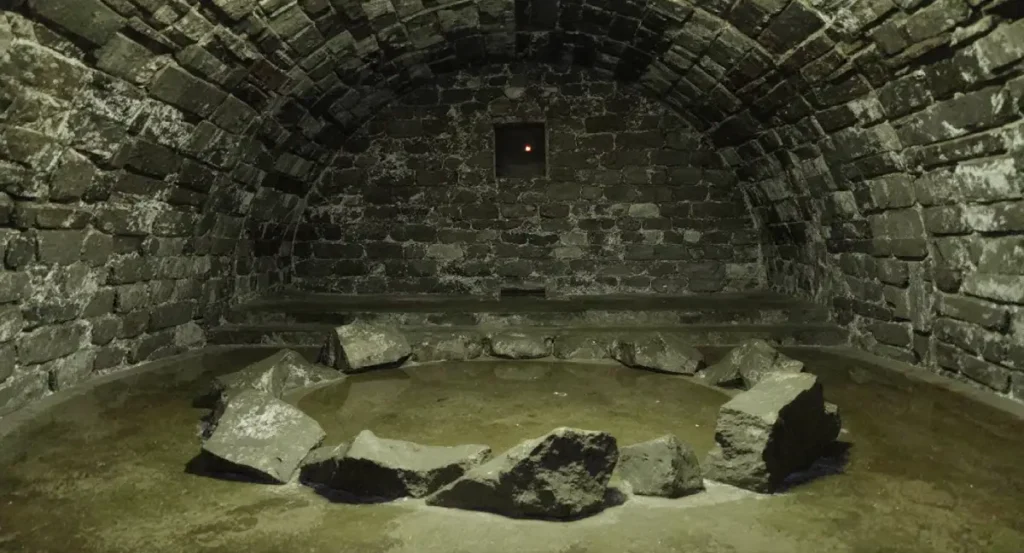
The Stone Circle: Nobody knows why there’s a stone circle down there. People faint in this room. The cameras malfunction. You feel watched.
Thermal cameras reveal temperature drops of 20 degrees in areas where human remains were found. Electromagnetic readings go crazy in certain areas.
What They Found
When archaeologists excavated in the 1990s, they found thousands of items: children’s shoes, pottery, and personal belongings. Stuff that belonged to people history forgot about.
You can tour the vaults, but be prepared. This isn’t Disney World scary – it’s real history scary.
3. Tower of London, England
Founded by William the Conqueror in 1066, the Tower of London has served as a royal palace, prison, armory, and execution site for nearly a millennium. Over 850 years of documented executions, torture, and imprisonment have left an indelible mark on this UNESCO World Heritage Site.
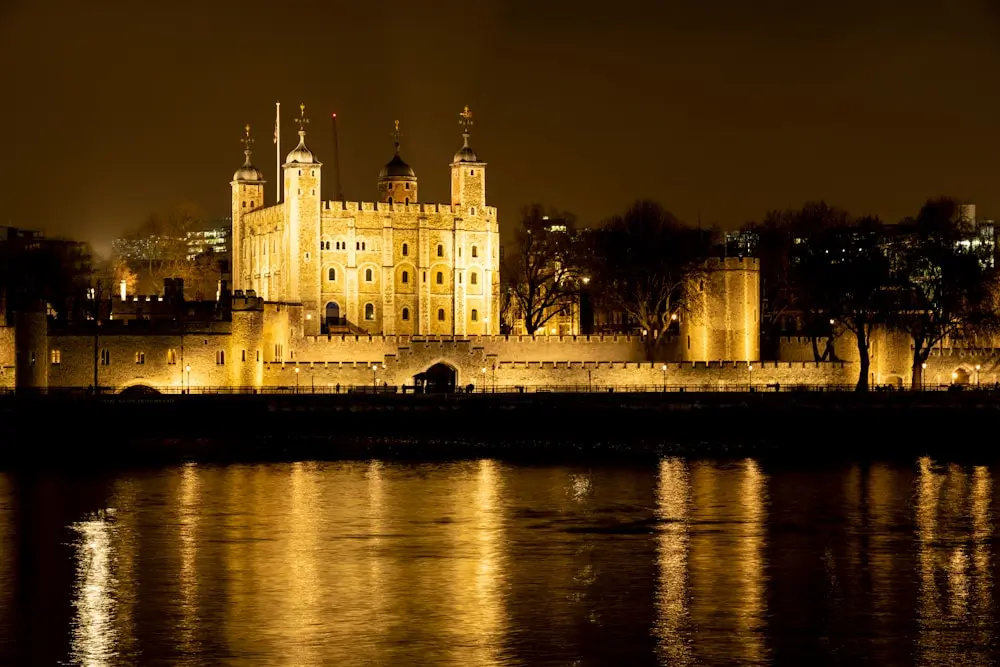
William the Conqueror built it in 1066. Since then, it’s been a royal palace, prison, and execution site. Anne Boleyn, Catherine Howard, Lady Jane Grey – they all died here. So did hundreds of others.
Anne Boleyn Won’t Leave
Guards have been seeing Anne Boleyn since the 1600s. She walks around without her head, usually near where she’s buried. In 1864, a guard saw her carrying her head under her arm while walking around the White Tower.

The Bloody Tower has the spirits of two young princes – Edward V and Richard. They disappeared in 1483. Guards see two small figures in nightgowns and hear kids’ voices in empty rooms.
Recent Incidents
In 1816, a guard literally died of shock after seeing something at the Jewel House. In 1988, a guard reported seeing a Tudor-dressed woman walk through a locked door.
The Tower keeps records of this stuff. It’s not marketing – it’s documentation.
4. Château de Brissac, France
The same family has owned this castle for 500+ years. They’ve got a permanent houseguest: the Green Lady.
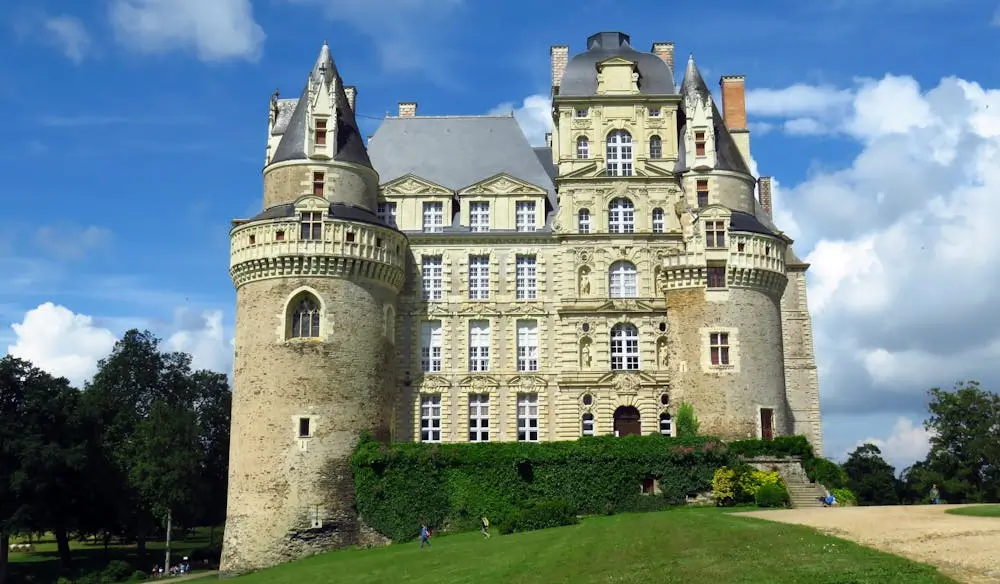
The Green Lady
Her name was probably Charlotte de Brézé. She died mysteriously in the 1500s. People describe her wearing an elegant green dress, but her face is missing eyes and a nose, just black holes.
King Charles X stayed here in the early 1800s. He woke up to find her standing at the foot of his bed. Since then, hundreds of guests have seen her.
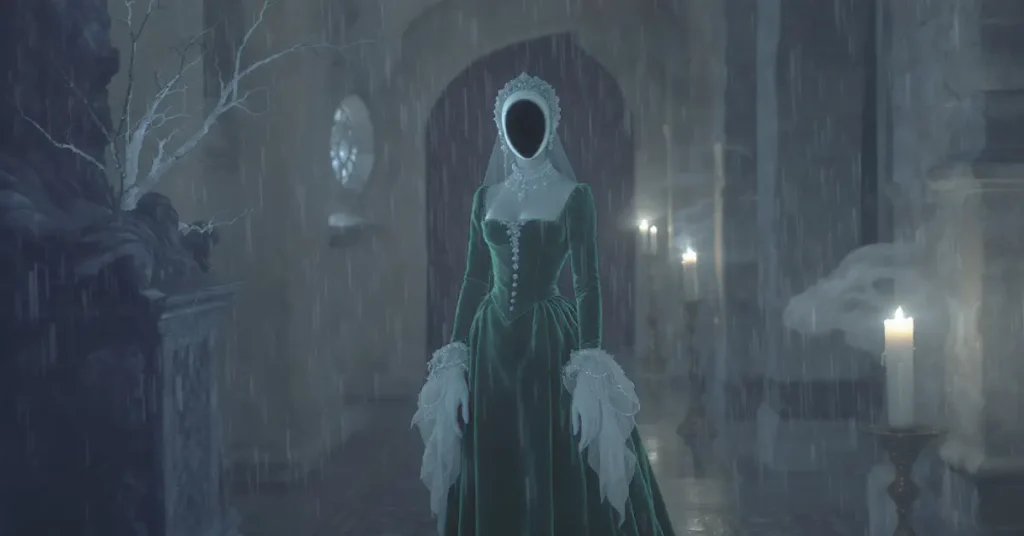
What People Report
- Her face in the windows of empty rooms
- Body impressions on freshly made beds
- Footsteps in hallways at night
- Doors opening and closing by themselves
The current Duke acknowledges she exists. The family talks about her like she’s a relative who never moved out.
The castle has tapestries showing what the Green Lady looked like when she was alive. You can visit and judge for yourself.
5. Poveglia Island, Italy
17 acres in the Venetian Lagoon. Over 160,000 people died here during plague outbreaks from 1348 through the 1700s. For over 400 years, it served as a quarantine station for plague victims and later as a mental hospital, earning it the nickname “Island of No Return.”
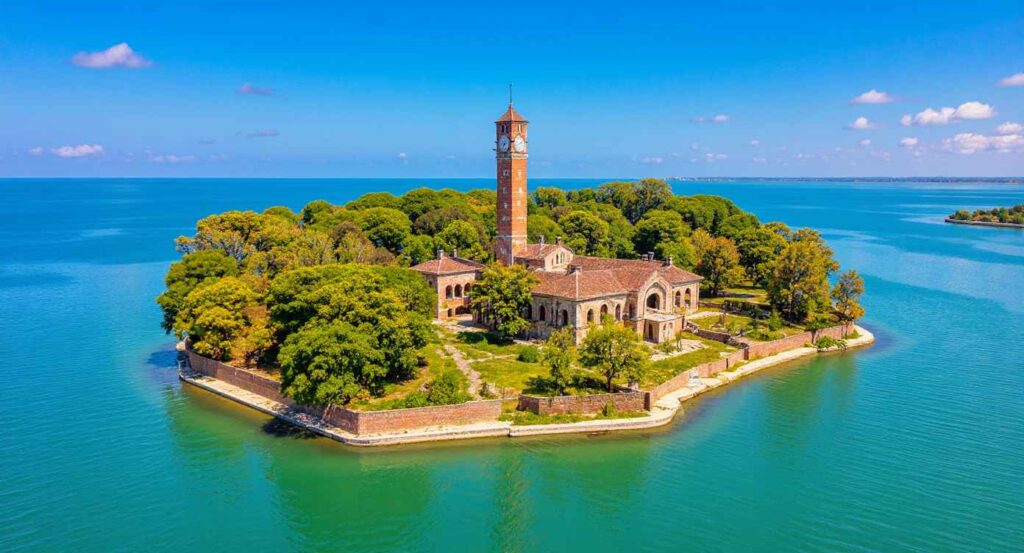
Plague Island
When plague ships arrived in Venice, they sent them here. People were left to die. Bodies were burned in massive piles. The soil is literally 50% human ash, confirmed by soil analysis.
The Mad Doctor
In 1922, it became a mental hospital. The doctor (his name is still classified) conducted experiments without anesthesia. He thought the island’s ghosts were driving patients crazy, so he tried to “cure” them with lobotomies.
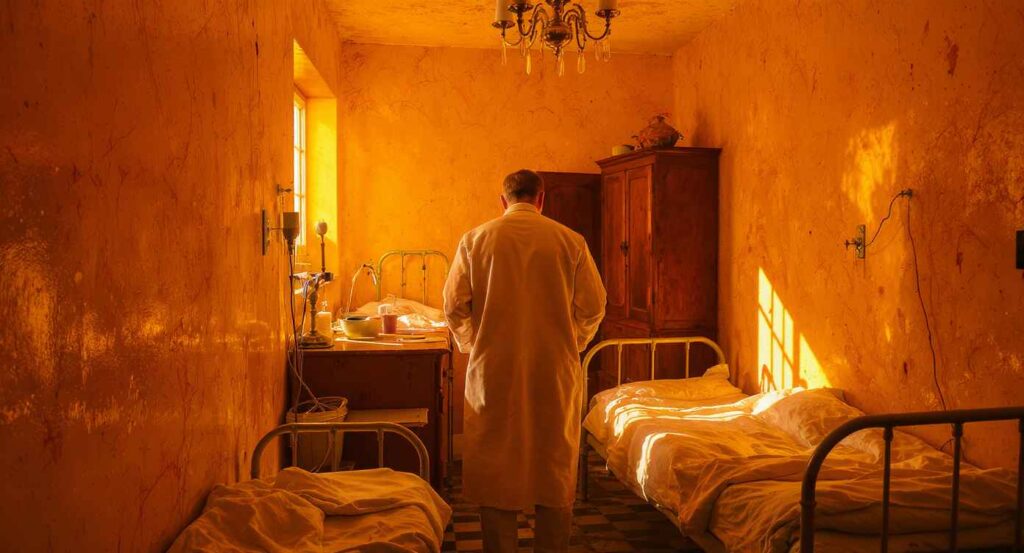
Hospital records show an 80% death rate. The doctor went insane, claiming plague victims were tormenting him. He died in 1946 after falling from the bell tower.
Why You Can’t Visit
The island’s been abandoned since 1968. Italian authorities prohibit access. People who sneak over report:
- Screams carried on the wind
- Apparitions of plague victims
- Electronics going haywire
- The smell of burning flesh
Local fishermen won’t fish in the nearby waters. They say their nets come up with human bones.
The Italian government attempted to sell the island on multiple occasions. No sales have been completed.
6. Predjama Castle, Slovenia
Built within a cave mouth in a 123-meter-high cliff face, Predjama Castle has guarded the Vipava Valley for over 800 years.
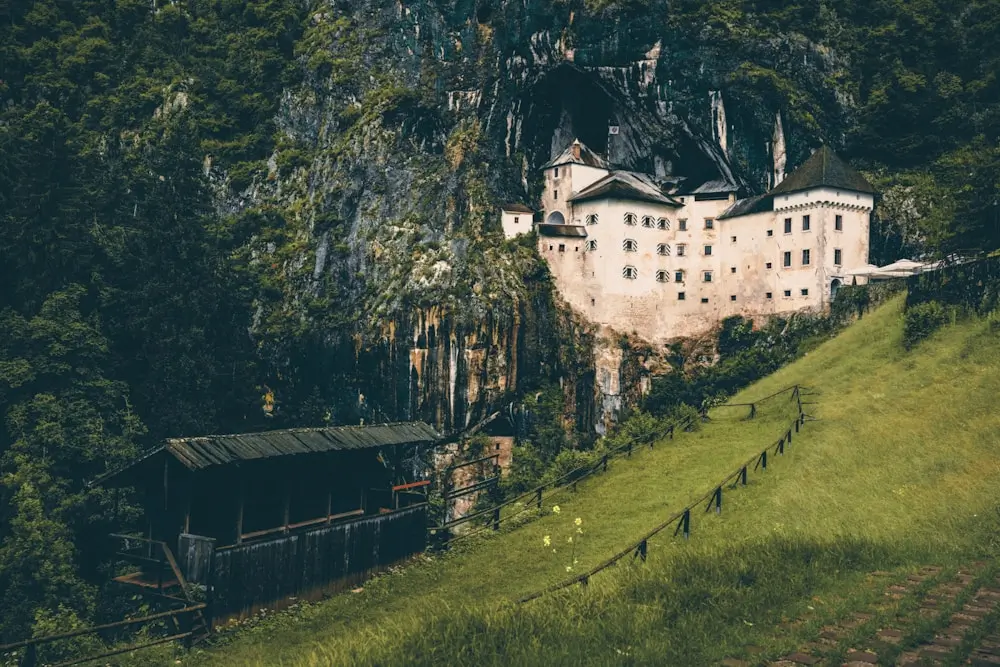
This Renaissance fortress, constructed around a natural cave system, is listed in the Guinness Book of World Records as the largest cave castle in the world.
The Robber Baron
Erazem Lueger lived here in the 1400s. He robbed Habsburg supply lines and used secret tunnels to escape during sieges. Even when surrounded for a year, he’d disappear and come back with fresh food.
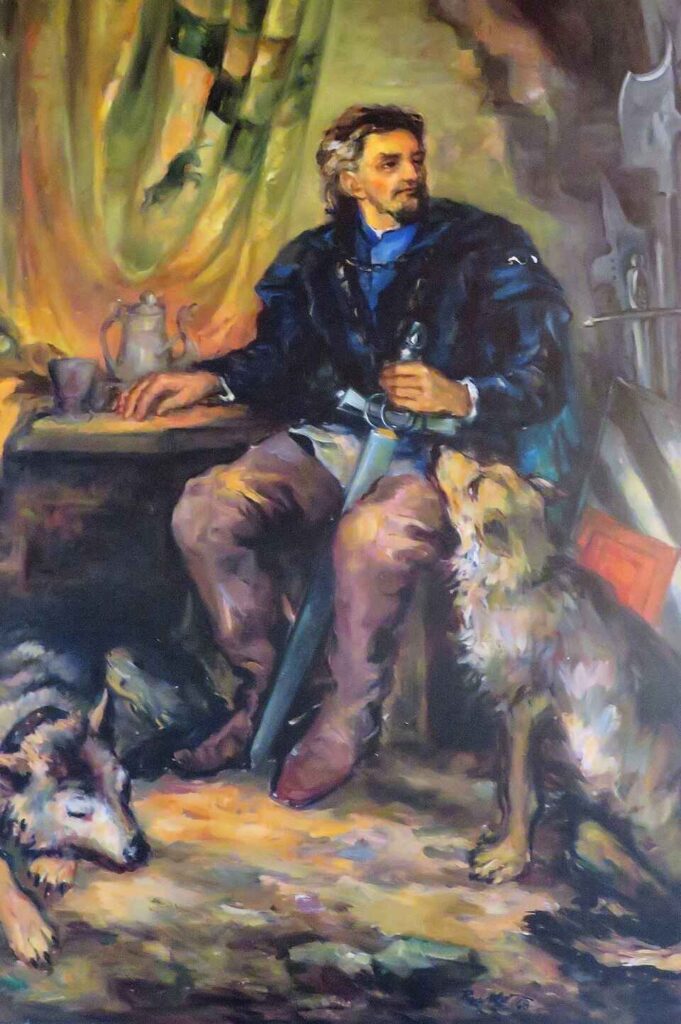
In 1484, a servant betrayed him. The Habsburgs knew Lueger visited the castle’s bathroom – the only room built outside the cave. They fired one cannonball at exactly the right moment. Dead instantly.
What Happens Now
Investigators document:
- Wild temperature swings in the cave rooms
- Voices in old Slavic languages
- Shadow figures moving through solid rock
- Knocking sounds from inside the cave system
- Compasses spinning wildly
The cave system amplifies sound, but investigators record voices that aren’t natural echoes.
Location Details
7. Château de Fougeret, France
This 14th-century castle in the Creuse department of France houses one of Europe’s most bizarre paranormal phenomena: a collection of human skulls that allegedly scream when removed from the premises.
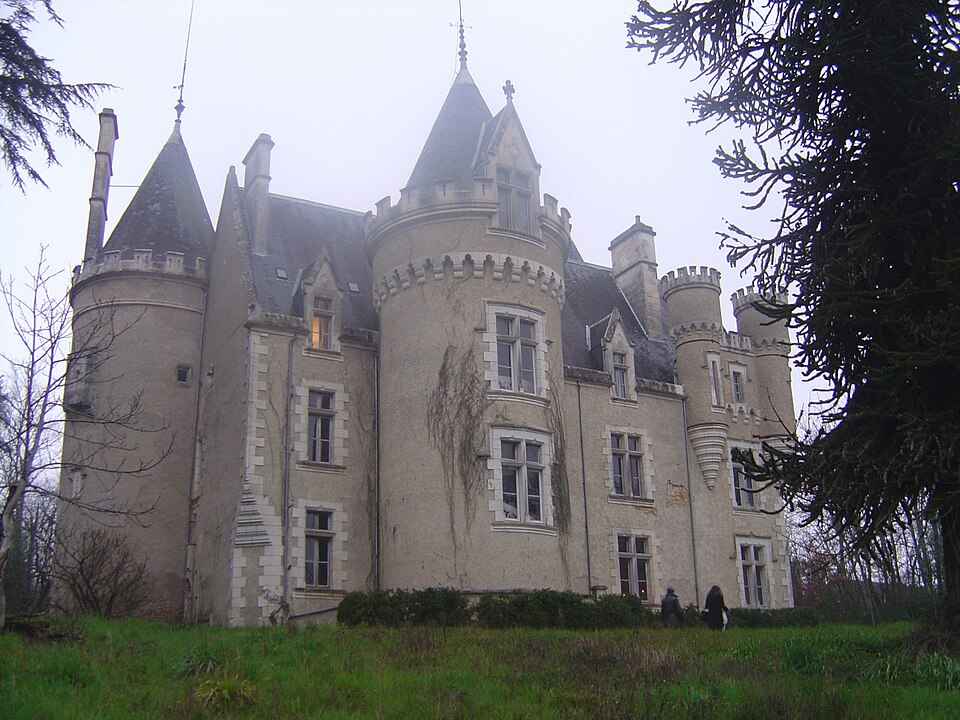
The Screaming Skulls of Fougeret have been documented by historians, paranormal investigators, and the Catholic Church for over 300 years.
The Seven Skulls
Seven family members died during a 1574 siege. Before dying, they swore their spirits would never leave the castle. Their skulls were buried in the courtyard but dug up in 1642 during renovations.
When exhumed, people heard piercing screams. Every attempt to move the skulls elsewhere causes problems: crop failures, livestock deaths, that kind of thing.
What Happens When You Move Them
Church records document multiple attempts:
- 1698: Bishop tried exorcism, fled when screaming got worse
- 1743: Revolutionary soldiers tried to destroy them, 3 died mysteriously
- 1892: Collector stole one skull, returned it after his family got violently ill
- 1954: Students took all seven for study, and all had psychological breakdowns
Science Can’t Explain It
University of Toulouse analyzed the skulls in 1987:
- No physical way they could make sound
- Weird crystal deposits not found in normal human bones
- Electromagnetic weirdness around the skulls
- Temperature changes of 15 degrees nearby
The skulls stay in a special chamber now. Visitors hear faint wailing, especially during storms.
8. Borgvattnet Vicarage, Sweden
Built in 1876, Borgvattnet Vicarage in Jämtland County has gained notoriety as Sweden’s most haunted building. Over the past 140 years, every family that has lived in the vicarage has reported supernatural encounters, leading to its abandonment as a residential property in 1945.
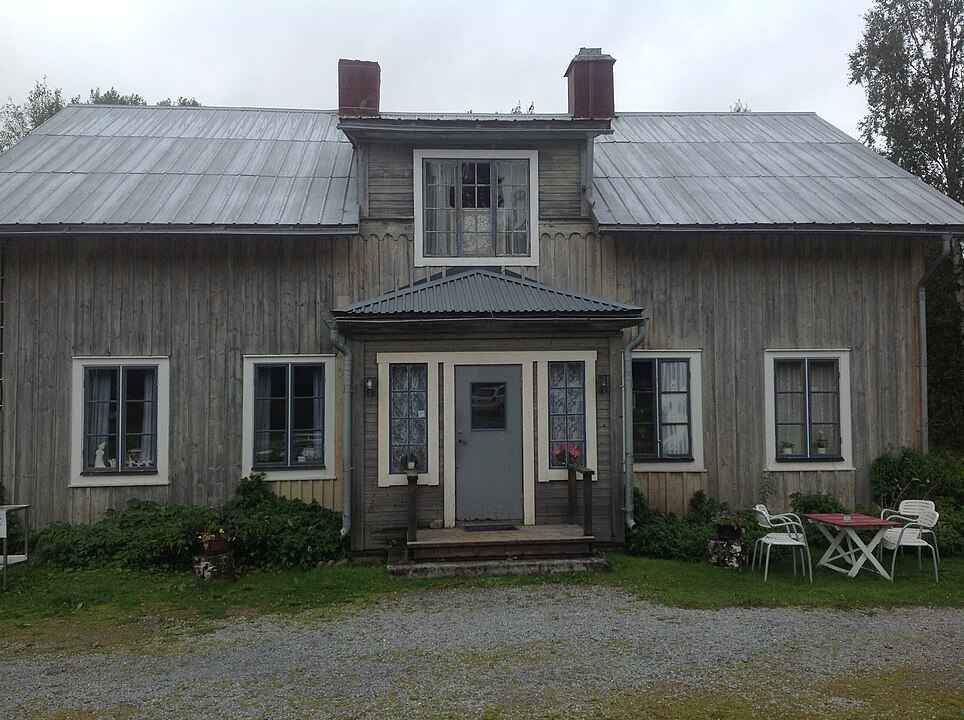
140 Years of Documentation
Built in 1876, the first incident occurred in 1927. Reverend Erik Lindgren kept detailed journals (now in Swedish National Archives) about:
- Furniture moving by itself
- A rocking chair that rocked alone
- Crying from empty rooms
- Three women in 19th-century dress
Five different families lived here. All left because of supernatural stuff.
The Three Gray Ladies
The most common ghosts are 3 women:
- Anna Hedberg died in the house in 1888
- Märta Sehlstedt, the housekeeper who died mysteriously in 1911
- An unknown woman who froze to death seeking shelter in 1901
What Investigators Found
Swedish Society for Psychical Research documented:
- Electromagnetic problems in certain rooms
- Temperature swings from -10 to +15 degrees
- Light anomalies in photos
- Voices speaking old Swedish dialects
It’s now a restaurant and B&B. Guests sign waivers acknowledging the ghosts. The guestbook has hundreds of entries from visitors.
9. Houska Castle, Czech Republic
Constructed in the 13th century, Houska Castle in northern Bohemia was built for an extraordinary purpose: to seal a gateway to Hell. Unlike typical medieval castles, Houska was not built for defensive purposes, has no water source, no kitchen facilities, and is located away from trade routes.
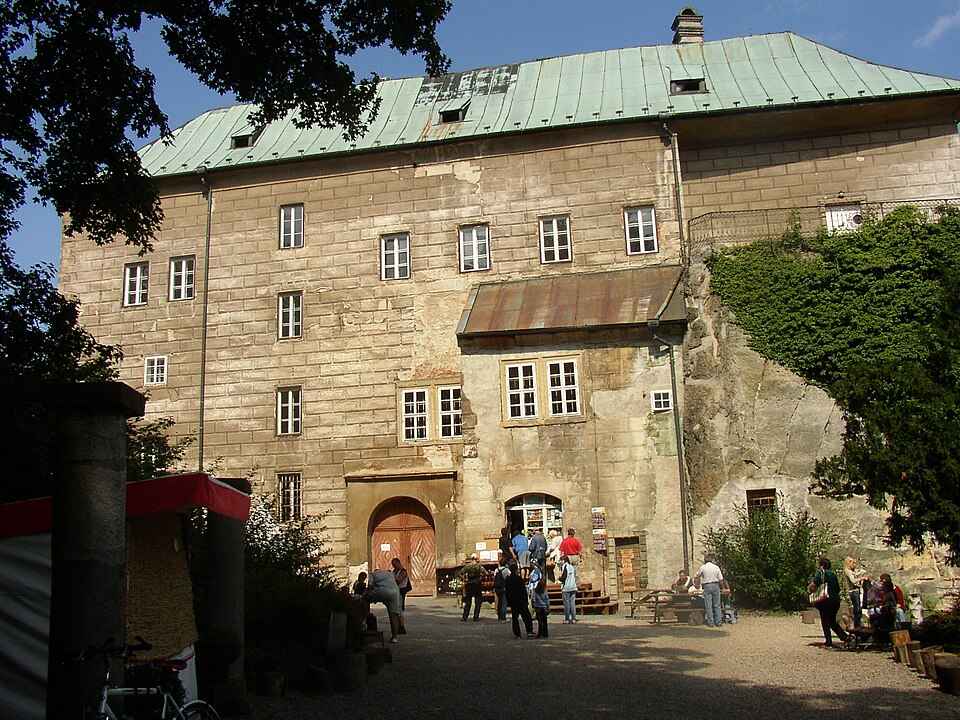
The Bottomless Pit
This castle wasn’t built for defense. No water source, no kitchen, not near trade routes. It exists to cover what locals called a gateway to Hell, a seemingly bottomless pit.
Medieval records say the pit was so deep nobody could see the bottom. It made screaming sounds, produced smoke, and flying creatures came out at night.
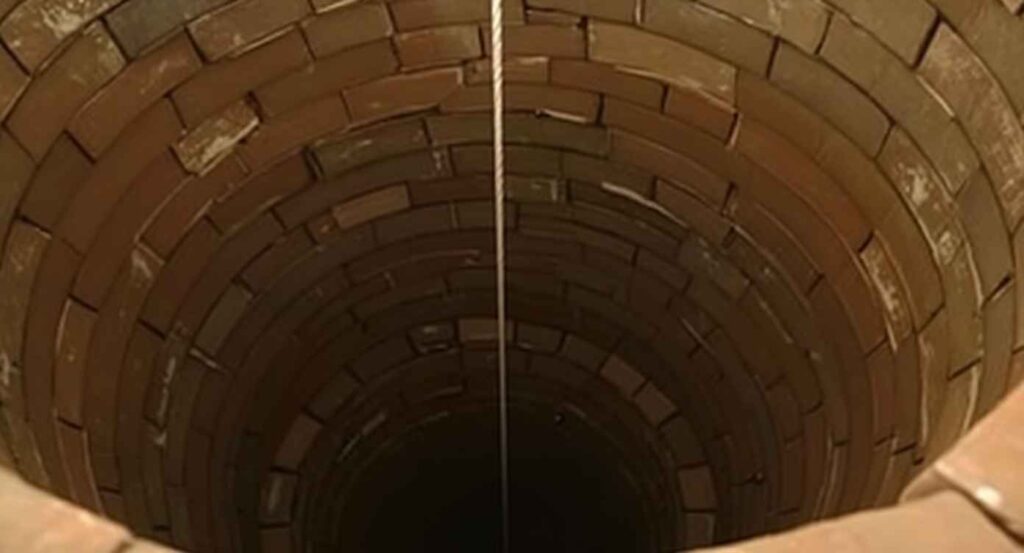
King Ottokar II ordered the castle built over the pit. Legend says prisoners got pardons if they’d report what they found down there. The first guy came up screaming, aged decades in minutes, with white hair and psychological trauma.
Why This Castle is Weird
- The chapel sits directly over the pit
- Lower-level windows are fake – painted on walls
- All defenses face inward toward the chapel, not outward
- Lower cells were designed to keep something in, not keep invaders out
What’s Down There Now
Modern surveys confirm:
- The pit goes down at least 130 feet
- The equipment fails when trying to measure true depth
- Extreme electromagnetic problems in the chapel
- Sounds coming from under the floor
- Photos showing shadowy winged figures
Nazi troops did occult experiments here during WWII. SS documents mention “Project Portal” and were trying to communicate with entities through the pit.
The chapel floor gets reinforced regularly, but visitors still feel vibrations and hear sounds from below.
10. Ancient Ram Inn, England
Built in 1145 as a priest’s residence, the Ancient Ram Inn in Wotton-under-Edge claims to be Britain’s most haunted house. The building stands on a pre-Christian burial ground and is located at the intersection of two ley lines, according to local archaeological surveys.
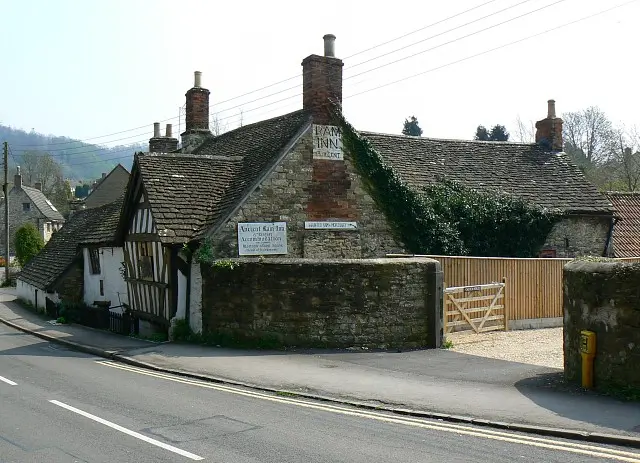
John Humphries bought it in 1968 and says he’s met 20+ different spirits. His journals document thousands of incidents, and his reports contain:
- Physical attacks during sleep from incubi/succubi
- A Bronze Age high priestess spirit
- Child spirits play throughout the house
- Shadow figures in photographs
- Spontaneous fires that don’t damage the structure
The excavations conducted on the site uncovered Roman temple foundations under the current building, children’s skeletons (suggesting ritual sacrifice), Bronze Age artifacts (3,000+ years of religious use), and medieval church items.
Universities and TV shows have studied the place. Thermal imaging shows human-shaped heat signatures in empty rooms. Electromagnetic readings are 300-400% above normal on the staircase.
11. Bran Castle, Romania
While marketed as “Dracula’s Castle,” Bran Castle’s true history is far more complex and equally terrifying. Built in 1388 as a military fortress, the castle controlled the mountain pass between Wallachia and Transylvania.
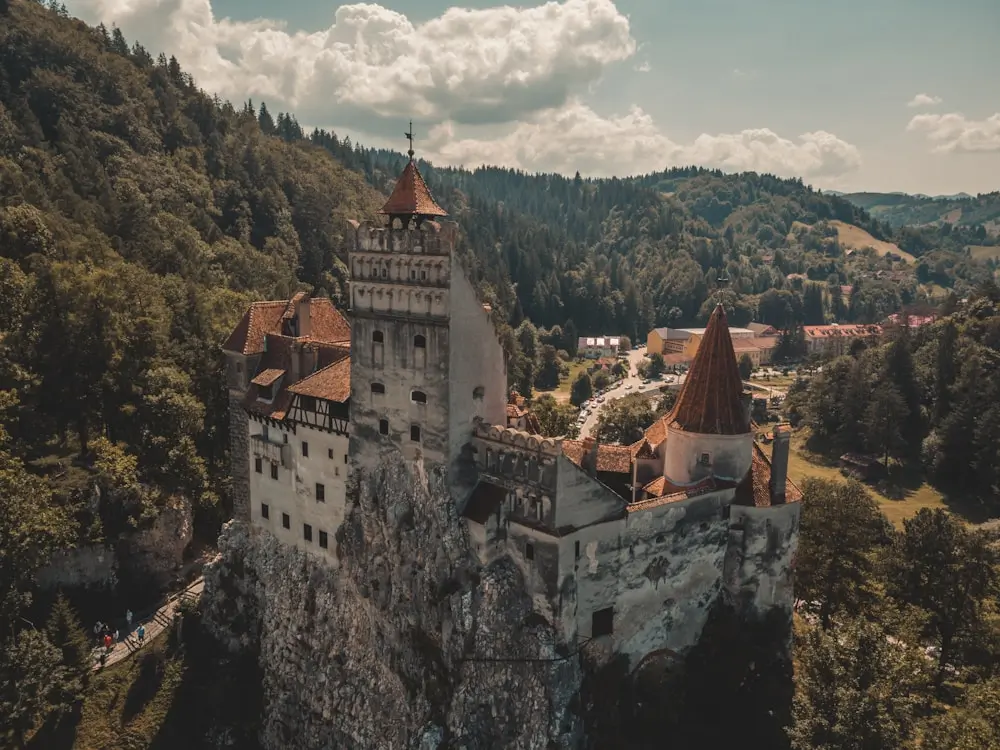
Vlad the Impaler was briefly imprisoned here in 1462, but he mostly lived elsewhere. Still, this was a strategic military post during his reign.
Vlad impaled 80,000+ people during 6 years. Most executions happened elsewhere, but prisoners often got held at Bran Castle first.
What People See Now
Investigators document:
- Medieval soldiers in the courtyard
- Chain-dragging sounds on stone floors
- Cold spots moving through rooms
- Voices in medieval Romanian
- Figures in period dress in photographs
The castle’s torture chamber, discovered during renovations in 1920, contained medieval implements, including stretching racks with bloodstains on stone floors, chains embedded in walls, and a well connected to an underground river for body disposal.
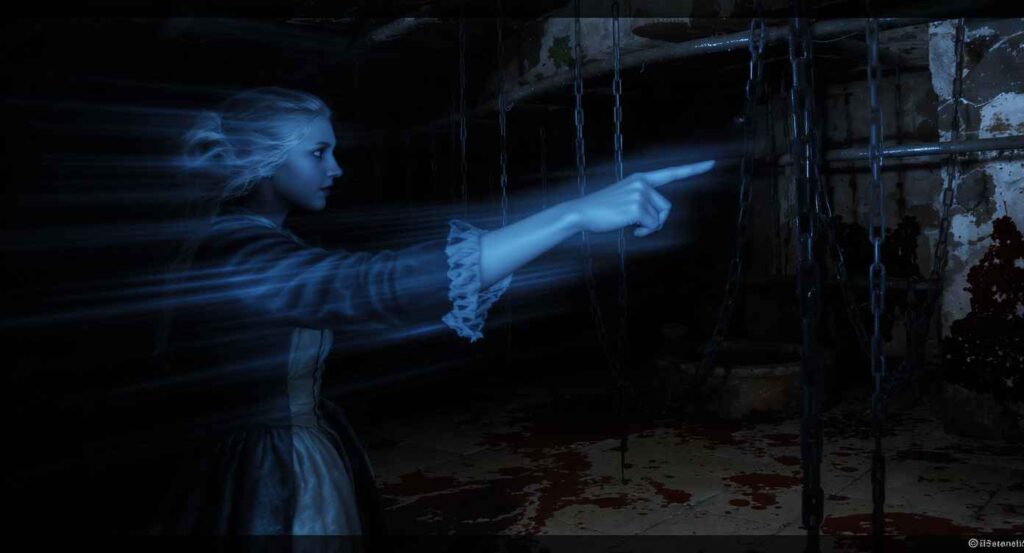
Most common ghost: a woman in white, probably Queen Marie of Romania (lived here 1920-1938). She appears in royal chambers, looking worried and gesturing toward the torture chamber.
Bran Castle receives over 600,000 visitors annually, making it Romania’s most visited tourist attraction. However, staff turnover remains unusually high, with many employees refusing to work night shifts due to supernatural encounters.
12. Corvin Castle, Romania
Built in the 14th century, Corvin Castle in Hunedoara, Romania, is considered one of Europe’s most haunted fortifications. The castle’s most notorious feature is the “Well of Souls”, a 30-meter-deep well in the castle courtyard where prisoners were thrown to die.
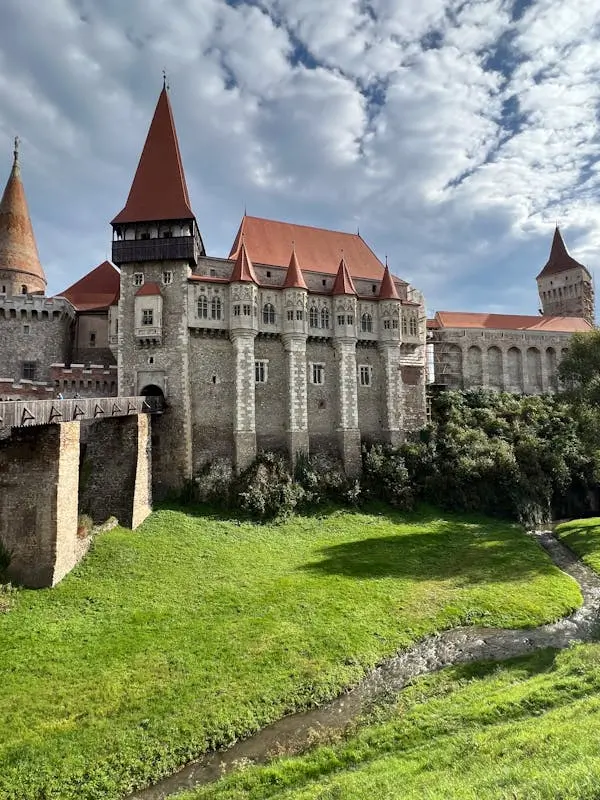
Historical records: 800+ people died in the well between 1440-1640.
The 3 Turkish Prisoners
3 Turkish prisoners spent 15 years digging the well with nails and spoons. They were promised freedom when they finished. Instead, they got thrown into the well they created. Their dying curse allegedly doomed the castle to eternal haunting.
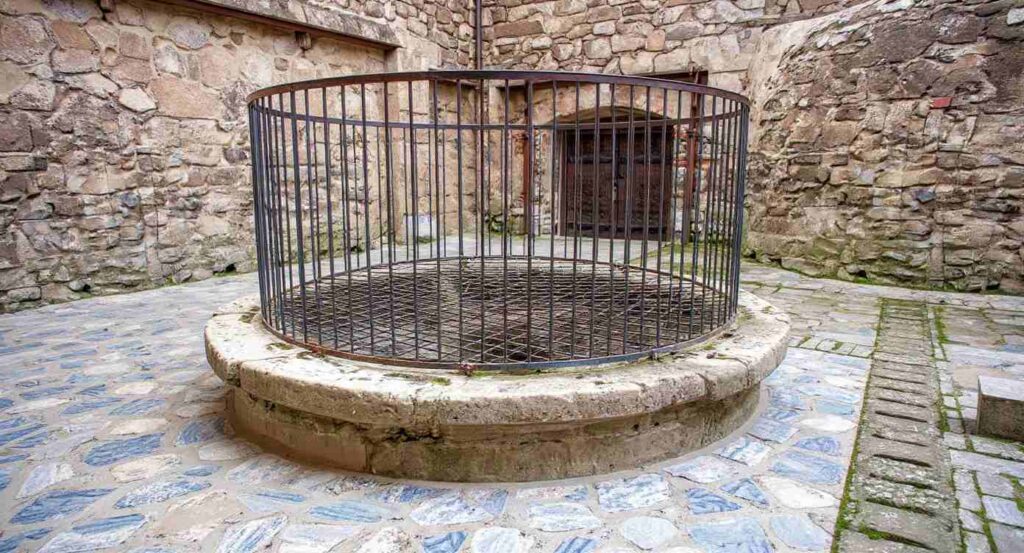
Sound analysis shows the well amplifies and distorts noise, but visitors report hearing crying and moaning from the depths, scratching sounds like digging, and voices calling for help in Turkish and Hungarian
What Security Cameras Catch
The castle’s security system records:
- Motion detectors triggering in empty rooms
- Temperature sensors showing impossible readings (below -4°F in heated rooms)
- Shadow figures in the courtyard
- Conversations in medieval languages
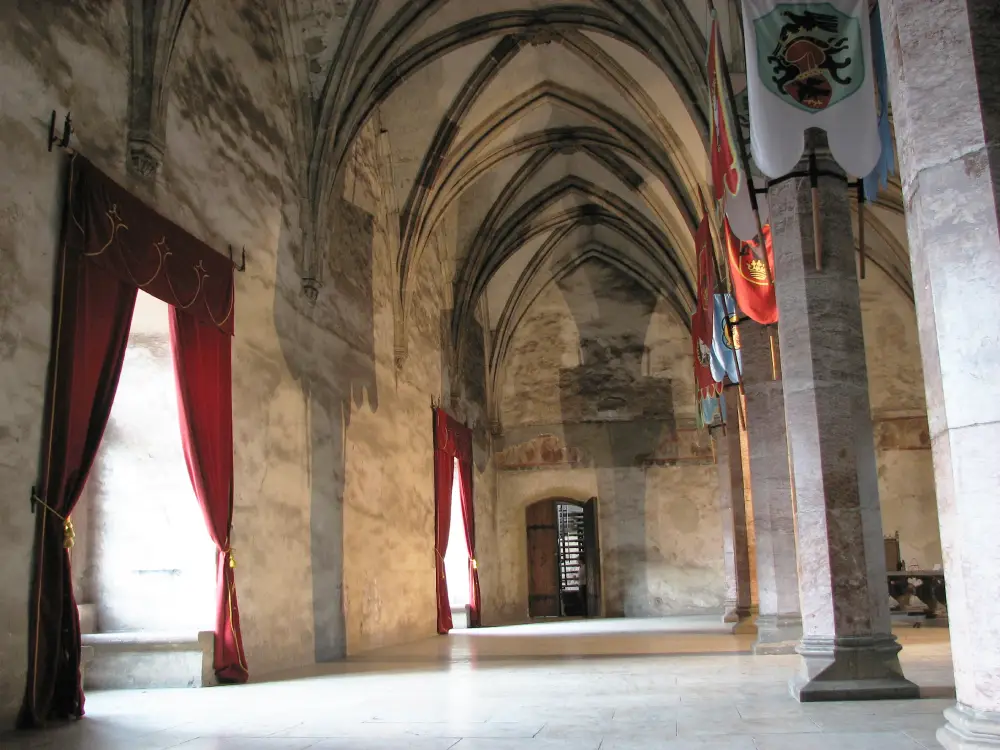
The Feast Hall experiences the most concentrated activity with reports of banquet tables setting themselves with phantom food and drink, sounds of medieval music and laughter from empty rooms, apparitions of nobles in period dress attending ghostly feasts, and cold spots that follow visitors through the room.
What They’ve Dug Up
Recent excavations have revealed mass graves containing over 200 skeletons in the castle grounds, medieval torture implements, including devices like the Judas Cradle, evidence of alchemical experiments in the castle’s lower chambers, and secret passages connecting to local monasteries and noble houses.
13. Château de Puymartin, France
This Renaissance castle in the Dordogne region has been owned by the same family for over 500 years and is famous throughout France for its resident ghost, the White Lady.
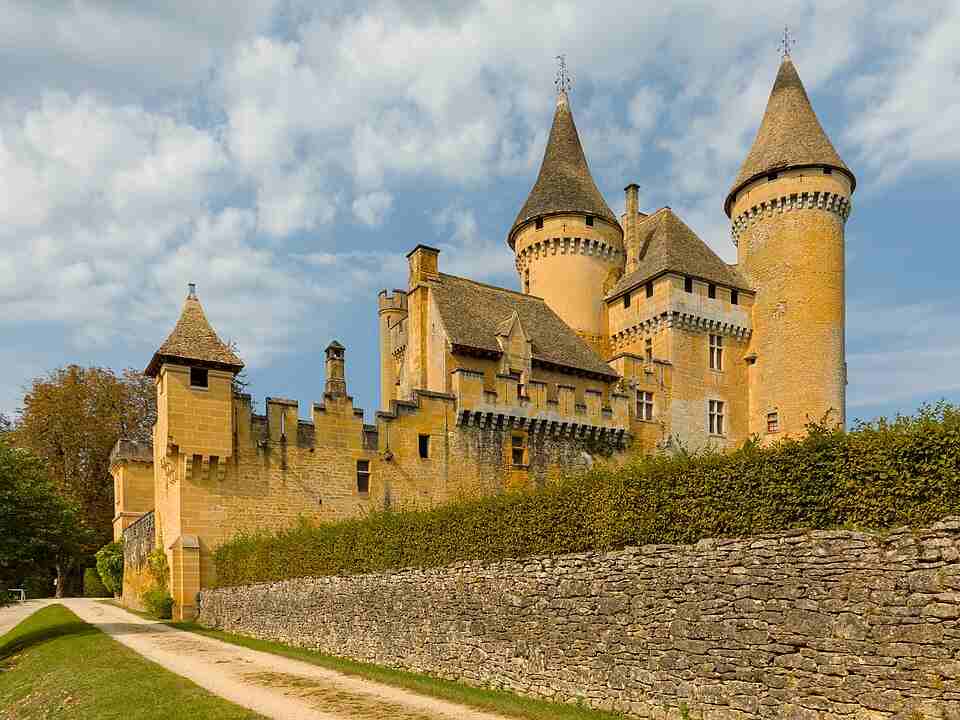
The supernatural activity centers around Thérèse de Saint-Clar, who lived in the castle during the turbulent 16th century.
According to detailed family records maintained across generations, she conducted an affair while her husband was away fighting in the French Wars of Religion.
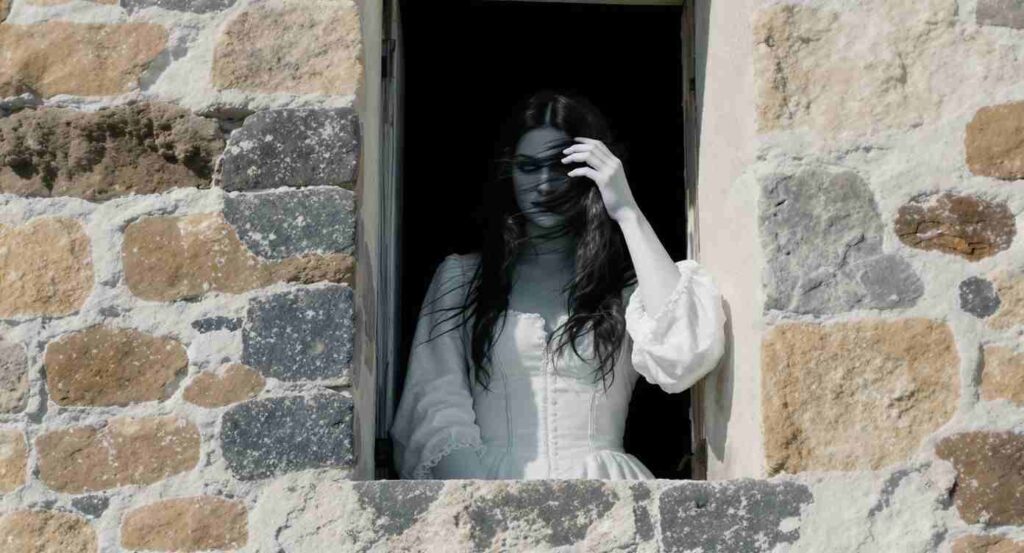
When he returned unexpectedly and discovered her infidelity, family chronicles record that he locked her in the North Tower room, where she died of starvation and despair after months of imprisonment.
Her spirit, known as the White Lady, has been consistently observed in that same tower room for over 400 years.
Location Details
Current visitor experiences include documented cold spots in the tower room with temperature drops of 15 degrees, strong perfume scents with no identifiable source, sounds of crying and sighing from empty rooms, doors opening and closing without mechanical explanation.
14. Palace of Holyroodhouse, Scotland
As the official residence of British royalty in Scotland, the Palace of Holyroodhouse has witnessed 500 years of royal drama, political intrigue, and violent death. The palace is most famous for the murder of David Rizzio, secretary to Mary, Queen of Scots.
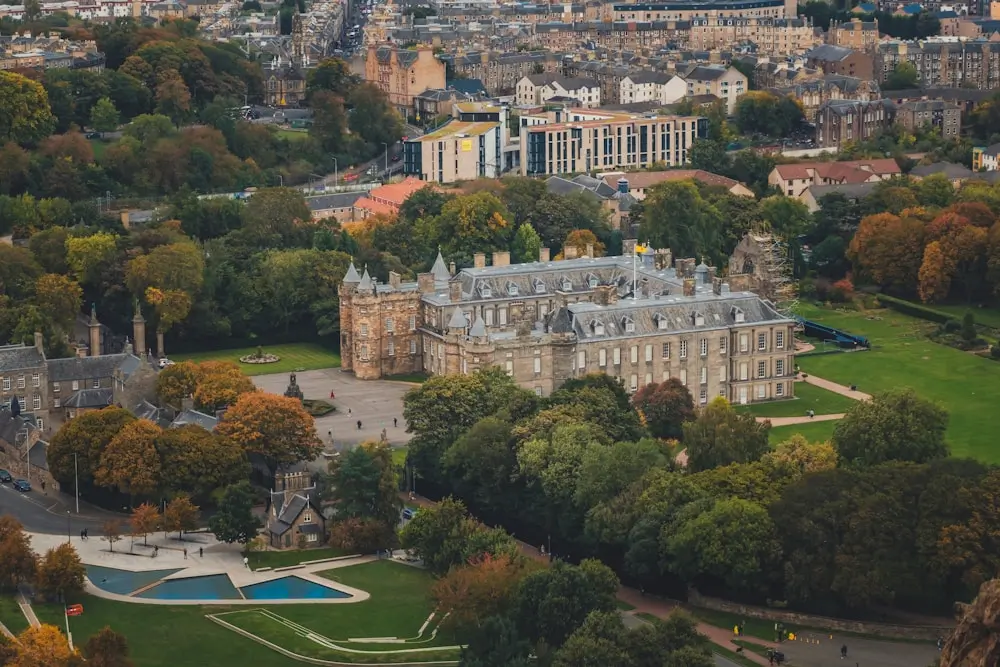
The Rizzio Murder
March 9, 1566: David Rizzio, secretary to Mary Queen of Scots, was eating dinner with the pregnant queen when armed men burst in. They dragged Rizzio out and stabbed him 56 times on the spiral staircase.

A brass plaque marks where he died. Bloodstains are reportedly still visible on the wooden floor despite centuries of refinishing.
What Staff Document
Historic Scotland requires palace staff to maintain detailed logs. They document paranormal encounters as part of security protocols. Official records include specific patterns and timing.
| Research Findings | University of Edinburgh |
|---|---|
| Electromagnetic anomalies | Rooms where Rizzio was murdered |
| Infrasound levels | Contributing to visitor unease |
| Heat signatures | Human-shaped in empty rooms |
| Light anomalies | During state functions |
The Gray Lady
Most common apparition: Agnes Sampson, healer executed for witchcraft in 1591. She appears in gray robes, carrying herbs or medical tools. Considered a good spirit who warns of illness or danger.
15. Leap Castle, Ireland
Leap Castle in County Offaly, Ireland, holds the distinction of being one of Europe’s most haunted and violent castles. Built in the 13th century by the O’Bannon clan, it later became the seat of the O’Carroll family, whose internal feuding resulted in centuries of bloodshed within the castle walls.
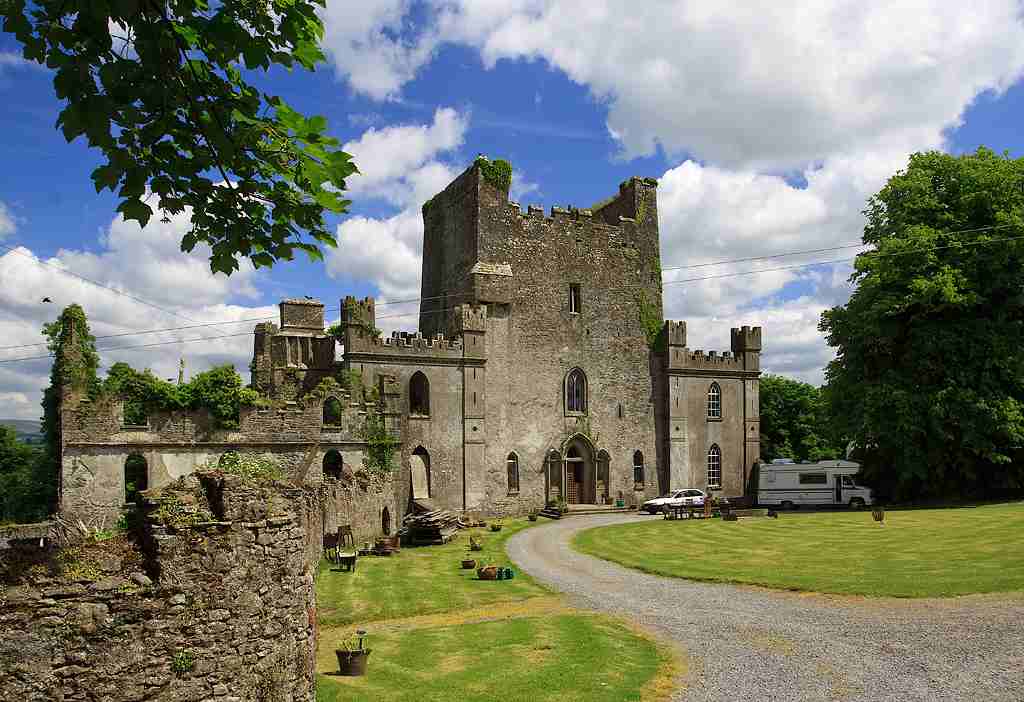
The Bloody Chapel
In 1532, one brother murdered another during mass. The victim was a priest holding a chalice. His blood allegedly stained the altar permanently. The chapel was abandoned and became a body disposal site.
The Oubliette Discovery
In 1922, renovation workers found a hidden chamber behind the chapel, an oubliette designed to hold prisoners until death. Inside:
- 150+ human skeletons
- Three cartloads of human bones
- Medieval weapons embedded in remains
- Torture evidence, including broken bones
- Personal items like jewelry and religious artifacts
The oubliette had spikes at the bottom. Anyone thrown in got impaled immediately. Survivors died slowly from starvation. The location behind thick chapel walls meant no one heard screams.
Current Owner’s Experience
Sean Ryan bought the castle in 1974, and documents daily supernatural encounters (mild to extreme): multiple apparitions, medieval Irish spoken in empty rooms, physical attacks on visitors causing unexplained injuries.
Researchers from 20+ countries have investigated. The consistency of reports across different cultures and belief systems supports the castle’s reputation.
Ryan offers tours by appointment. Visitors sign waivers acknowledging paranormal activity.
What Makes These Places Different
These aren’t tourist traps with fake ghost stories. They’re places where real historical trauma occurred.
Each location represents dark chapters in European history where the boundary between past and present seems thin. Whether you believe in ghosts or not, the history alone is enough to give you chills.
What’s interesting is how many of these places have similar phenomena: temperature drops, electromagnetic disturbances, audio recordings of period languages, and visual apparitions in historical dress. The consistency across different countries and cultures suggests something beyond simple folklore.




